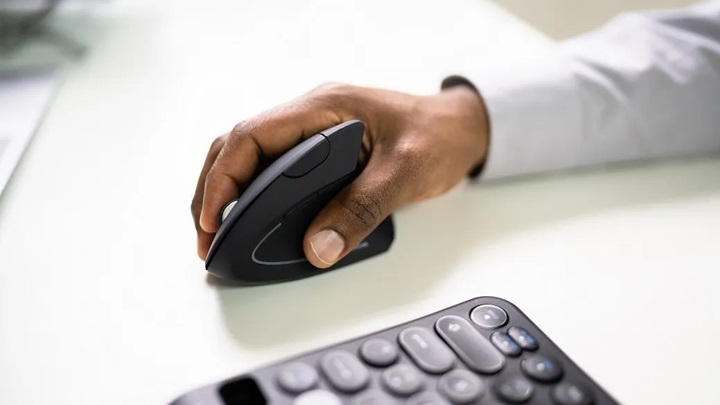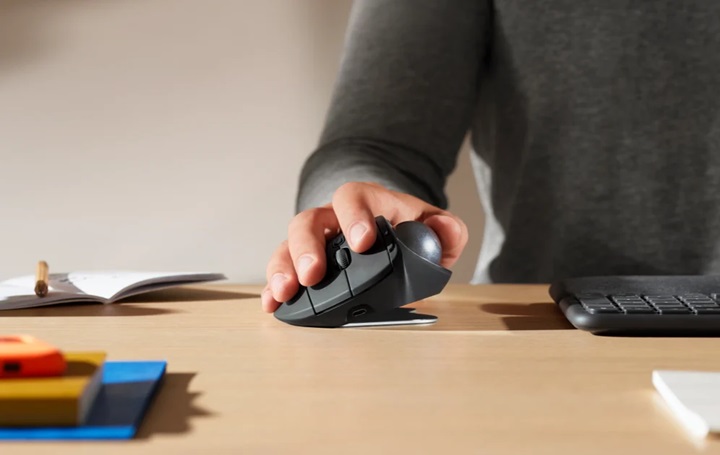Repetitive hand movements with a traditional mouse can cause some people wrist pain and discomfort over time. Thankfully, we have ergonomic alternatives designed to support the wrist and reduce stress and tension in the muscles of the shoulders and forearms as well. As such, there are several factors to consider to help you navigate the wide range of ergonomic mice available on the market.
It’s important to identify the different styles and aspects of the cursor to enhance comfort during extended computer use. Choosing the right type of ergonomic mouse will help you mitigate the risk of strain and discomfort, and help you maximise the benefits that come with this ergonomic addition to your computer.
Things to Consider When Buying Your First Ergonomic Mouse

Think of the mouse as an extension of your hand. With extended use of the cursor, the muscles in your forearm are working overtime which can contribute to pain and tension in your hand and shoulders. So it is a no-brainer that the mouse should be able to fit your needs and provide you with maximum comfort during its use. In fact, ergonomics are of huge importance to our physical health and our overall productivity.
Are You Left-Handed or Right-Handed?
The use of your dominant hand plays a huge role in choosing the right design. There are mice tailored for right-handed and left-handed individuals that follow the natural contours of the hand and deliver maximum comfort during prolonged use. These additions are designed to accommodate the unique needs of the hand, offer a supportive grip, and enhance the overall comfort.
But there are also ambidextrous mice available, geared towards both left and right-handed people. They allow a seamless transition from left to right hand and vice versa, without using extra effort and without adding strain on the wrists.
Ambidextrous additions ensure a relaxed position of the hand, which contributes to reducing tension in the muscles. This practical and highly convenient design comes in both wireless and wired options, both ensuring alignment with the hand’s natural movements.
Mouse Size
There is a wide range of ergonomical mouse sizes and it’s only normal to be clueless about where to start when buying your first one. To make sure that you’re choosing the right size, look at the size of your palm and see how the mouse fits. This is one of the crucial factors in ensuring comfort and compatibility with your hand.
If the mouse is too small or too large, it can lead to discomfort either way because it’s not optimised to the size of your palm. If the size of the mouse is too small, you will need to use a lot of effort to grab and manoeuvre the cursor, which can lead to additional stress on the wrist and the muscles. Ideally, it should fit comfortably in your palm and help you rest your hand and click the buttons easily without extra effort.
Grip Style
The grip style that the mouse provides can significantly influence the comfort and rest of your hand. For instance:
- Vertical mice provide a handshake-like position, which can help reduce forearm pronation. Thanks to their upright orientation, the design follows a more natural hand position which minimises the risks of the development of carpal tunnel syndrome and repetitive strain injury.
- Another layout that is designed to suit the natural flow of your hand is a roller bar mouse. It optimises the movement of the cursor without the need for clutching and flexing your hand. It’s very easy to navigate and the design allows the use of both hands. This layout incorporates the mouse inside a bar which you can roll and slide to move the pointer on the screen. It helps improve productivity by providing optimising control and precision over the cursor and reducing forearm, shoulder and hand strain and pain.
- There are also adjustable mice, designed to avoid static positions of the hand for too long. This is supported by the layout that allows a relaxed grip in any position. There are wireless and wired options that can be for left and right-handed use or ambidextrous use.
Wireless vs Wired
Wireless ergonomic mouse options provide more freedom in terms of movement. However, since they run on batteries, it’s important to consider the battery life and whether they come with rechargeable batteries or not. If your type of work requires more flexibility in movement or you don’t like being constrained by cables, then going with a wireless mouse seems like a better option.
Wired mice, on the other hand, provide consistent connectivity, meaning, the connection will not be interrupted if the battery runs out of power like with wireless extensions. That being said if you don’t want to be concerned about whether your mouse will stop working due to low battery power, the wired option makes more sense in this case.
In conclusion, one option is not better than the other. Whether you choose a wireless or a wired mouse mostly depends on your work settings, your personal preferences, and your needs.
Trackball Mouse

A trackball mouse utilises a trackball to move the cursor on the computer screen. This technology enables moving the cursor just by using your thumb, without needing to move the entire hand. The ball is typically positioned on the side or in the middle of the mouse, which allows seamless web scrolling by reducing the forearm pronation.
As such, this option is ideal for those suffering from wrist strain and pain, by providing the user with optimal comfort and hand rest. Just keep in mind that the ball needs to be taken out and cleaned periodically, for optimal performance.
Buttons Number and Touch Sensitivity
Not all mice come with the same number of buttons and programs. Some options may have additional buttons that enable customisations of specific functions. Whether you choose a mouse with additional buttons will mostly depend on the specifications of your work and personal needs.
Also, if you want to enjoy the maximum benefits of this office must-have, choose one with buttons that respond to a light touch. Not having to press hard or clench your fingers while moving the cursor will optimise the comfort of the hand.
Brand Reputability
With so many different types of computer mice in the stores, it’s easy to get overwhelmed by all the different brands, making the selection a bit challenging. If unsure where to start, try researching the most reputable and trustworthy brands in the industry and read through the reviews of the users, to get a general idea of the overall mouse performance.
Many retailers offer an online selection of some of the most renewed brands in the field. If you do your homework before hopping on the wagon, you’ll have a much easier time recognising good brands when browsing available offers.